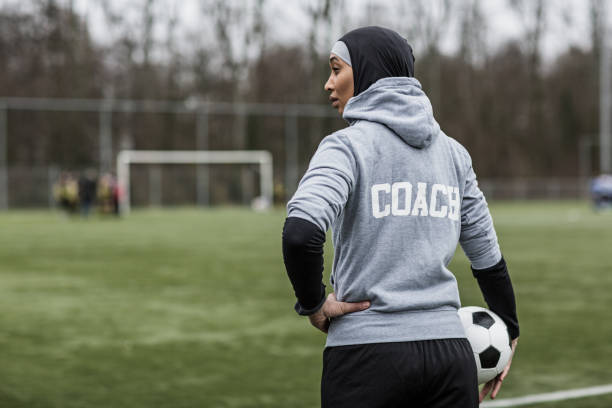How to improve decision making
Crucial to evaluating decision making is having a clear idea what good decision making is. In a previous article I argued that decision outcomes on its own are not useful criteria for a good decision. A good decision is not necessarily a decision that turned out ok, and similarly a bad outcome doesn’t mean that the decision was wrong.
How to evaluate a decision?
In a thoughtful podcast sport scientist Sam Robertson and performance strategist David Joyce define eight characteristics of good decision making in sport. According to Robertson and Joyce, the decision:
- should be situated and constrained appropriately within its context.
- faithfully represents the problem at hand.
- recognizes the type of environment in which it is operating.
- considers the available evidence,
- and does so relatively objectively and with limited bias.
- doesn’t take so long to cease to be useful.
- making process is iterative and utilizes feedback.
- can be evaluated.
These decision characteristics are useful for decision evaluation, and multiple critical questions have been identified to improve decision making on these characteristics in general (Paul et al., 2019) and in a sports’ context specifically (Post & Birt, 2020).
People have the tendency to dive into a solution before having a clear understanding of the issue
Let’s look at two characteristics and the questions that can be asked to improve the quality of decision making: the analysis represents the problem at hand and considers the available evidence. People have the tendency to dive into a solution before having a clear understanding of the issue – and whether there actually is a problem that needs solving.
It can help to question to what extent you have a clear understanding of the issue. Practical questions include: what is your problem exactly? How do you know that this is a problem? What evidence do you have? How is your problem standing in the way of success? What would be the consequence(s) of solving the issue?
Another characteristic in decision making that provides a challenge is to consider the available evidence objectively and with limited bias. To counter the confirmation bias, for example, one can question the problem analysis by asking: can you think of cases where your problem is not a (big) concern? Can you think of other issues that may be more important to tackle?
Similarly the potential decision can be questioned: could there be cases in which your decision does not work? Are there possible worlds in which your assumptions might not hold? Which alternatives are worth considering – including the option of not doing anything? How would you rank these solutions compared to the alternative you favour?
Our thinking is inherently dialogic
Graeber & Wengrow, 2021
Considering alternatives and contrary arguments are such an important part of decision making, that they are a separate characteristic to assess decision making in intelligence agencies (Gelder & de Rozario, 2018). Based on this work, there are four more characteristics that bring attention to characteristics not – explicitly – mentioned in the criteria by Robertson and Joyce:
- Logic: how strong is the reasoning that supports the decision?
- Evidence: how well are items of evidence evaluated?
- Alternatives: how well are alternative hypotheses and contrary arguments considered?
- Clarity: how easily will someone else understand the decision making and appreciate its quality?
The last criterion, clarity, is especially important when decision evaluation is done with at least one other person. There is renewed interest in the art of collaborative reasoning, or critical thinking in groups. Findings in cognitive sciences suggest that people reason better when they are thinking about an idea or decision together than when they reason alone (Mercier, 2016; Trouche et al., 2016). Perhaps because our thinking is inherently dialogic (Graeber & Wengrow, 2021).
The topic of collaborative reasoning I will explore in future articles (it is the topic of my PhD-research). The point here is that to evaluate decision making, it is useful to make use of our inherent skills to question and critique ideas. And to structure this dialogue with the criteria and questions for good decision making.
Sources
Gelder, T. V., & de Rozario, R. (2018). Contending Analyses: A New Model of Collaboration for Intelligence Analysis. Journal of the AIPIO, 26(3), 13.
Graeber, D., & Wengrow, D. (2021). The Dawn of Everything: A New History of Humanity (First Edition). Farrar, Straus and Giroux.
Mercier, H. (2016). The Argumentative Theory: Predictions and Empirical Evidence. Trends in Cognitive Sciences, 20(9), 689–700. https://doi.org/10.1016/j.tics.2016.07.001
Paul, R., Elder, L., & Linda Paul, R. and E. (2019). The Miniature Guide to Critical Thinking Concepts and Tools 8ed (8th edition). Rowman & Littlefield Publishers.
Post, G., & Birt, J. (2020). Assessing esport candidacy for critical thinking education. Conference Proceedings. ASCILITE 2020: 37th International Conference on Innovation, Practice and Research in the Use of Educational Technologies in Tertiary Education, 6.
Trouche, E., Johansson, P., Hall, L., & Mercier, H. (2016). The Selective Laziness of Reasoning. Cognitive Science, 40(8), 2122–2136. https://doi.org/10.1111/cogs.12303

